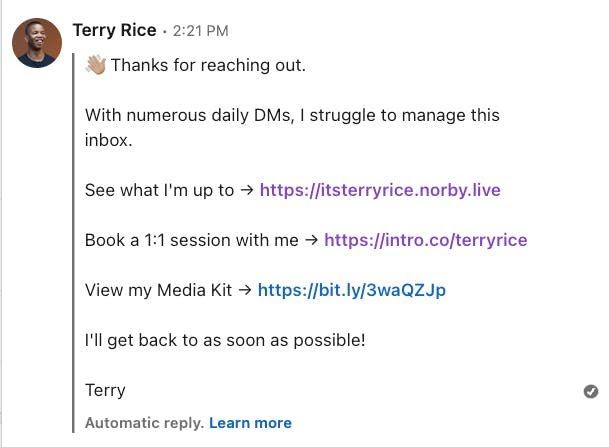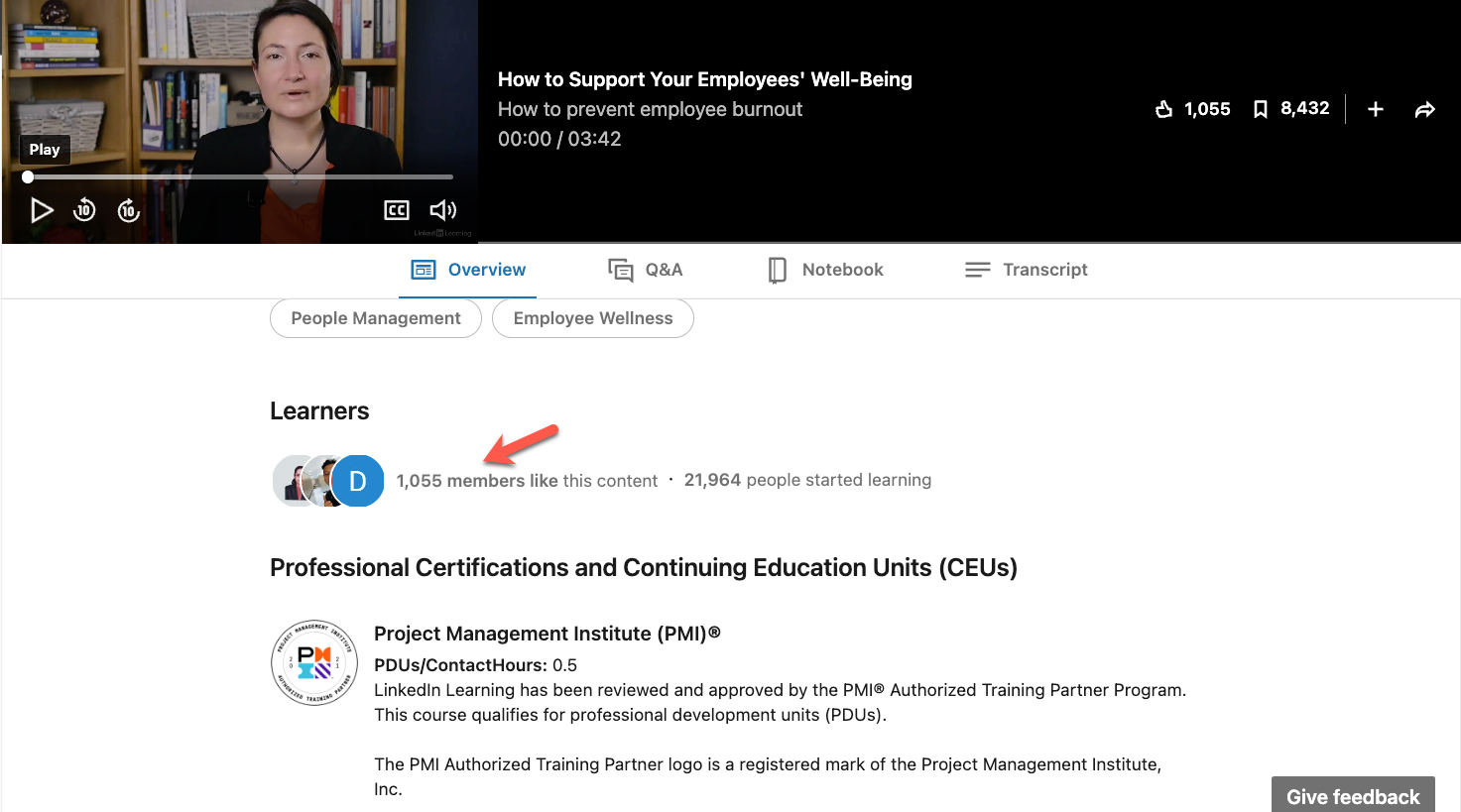Want to receive The Solopreneur’s Shortcut every week? Subscribe here. We’ll send one thought, one tactic, and one time saver straight to your inbox. No fluff, just proven techniques for growing your business.

My four kids went back to school this week. For my son, Tyson, this was a bigger transition since he started pre-k at a new school. Although he finally went inside there was a fair amount of leg clutching and bribery involved.
I tried to shake it off so I could go about my day but the experience stuck with me for a while even as I was on calls with business partners.
Overall it was a bit of a challenging morning but it reminded me that you never know what people are going through so you may as well default to being kind.
And with that, let’s get into it.
Thought: What should you let go of?
Time-saver: Automating responses on LinkedIn
Tactic: Finding people who are interested in your services
Reading time: 3.5 minutes
Thought: What should you let go of?
For today’s thought I’ll start with one of my favorite quotes. “Life is like the monkey bars: you have to let go to move forward.”
As you can imagine, this can easily be applied to entrepreneurship. For the first three years I largely focused on providing Digital Marketing services. I was good at it and made decent money, but eventually I got bored with it and decided I had to move on.
Here’s the part that hurt a bit. To let go – and free up more time – I had to turn down a $60k digital marketing contract. Fortunately it worked out. By the next year my revenue was higher than ever and it came from entirely different revenue streams.
I’m not asking you to make the same drastic changes that I did, but it is worth thinking to yourself; “What do I need to let go of in order to move forward?”
Time-saver: Automating responses on LinkedIn
Lead nurturing is a delicate process. If you move too fast you could tank the deal. If you move too slow you may miss out on an opportunity or, at best, unnecessarily prolong the sales cycle.
How can you avoid this? Set up an away message on LinkedIn. The implied use case is for you to automatically reply to a message and let the other person know they should expect a delay. However, you can also use it to accelerate or end a sales conversation.
You can learn how to set it up here. I should note, at this time away messages are a premium feature. However, after reading this week’s tactic you may want to upgrade if this isn’t enough of an incentive.
I use mine to answer common questions and let people know how they can partner with me.
You can see it below.

You can change yours based on your business and desired outcome, but I suggest letting people know how they can pay for your time.
That way, if someone reaches out asking to pick your brain for free they’ll immediately see a message letting them know how to book a paid session.
Tactic: Finding people who are interested in your services
One major benefit of LinkedIn is the ability to easily identify anyone in your target audience based on their job titles and company. Unfortunately, that’s just demographic information. It doesn’t tell you if that person actually cares about your service, or even their job.
To truly hone in your audience; you also need access to psychographic information which reflects their activities, interests, and opinions.
And although LinkedIn may have a lot of premium features, access to psychographics isn’t one of them. So here’s what you can do as a workaround.
Step 1: Get clear on your target audience
This goes beyond understanding who you help. You also need to understand the decision makers and decision influencers involved with the process of hiring you.
For example, let’s say you help employees avoid burnout. Although you’re helping employees, they wouldn’t be the decision makers when it comes to signing a contract.
At best, they could just influence the process. Decision makers would be C-level executives, HR Managers or someone else charged with retaining employees by keeping them happy.
Putting more thought into your true target audience is crucial to the success of this tactic as well as any other marketing activities. Be sure to put some thought into it.
Step 2: Look for LinkedIn Learning courses that solve this problem.
This is how we discover the psychographic information that reflects our target audience’s activities, interests, and opinions.
If they’re taking a LinkedIn Learning course about a topic; that’s an activity aligned with an interest and after completing it they will have an opinion on it.
This is your audience! The people who are aware of a problem or opportunity and are willing to invest their time into learning more about it.
Back to our example of helping employees avoid burnout. There’s literally a course called “How to prevent employee burnout” so it’s safe to say anyone who takes the course is aligned with your target audience.
On your end you’ll need to search for questions or topics that your audience would be interested in as well.
Step 3: Identify people who have “liked” the course.
If some watched the course and liked it, this shows interest and appreciation for the content, which is also your area of expertise.
You can see their profiles by clicking on the link that says “X members like this content.”

From there, take a look at their titles, then identify people who can make or influence decisions at their company.
I suggest identifying around 40 people and adding their profile URL to a spreadsheet so you can engage with them going forward. I’ll explain that process in the next step.
Heads up. Make sure they’re active on LinkedIn. If they haven’t posted or liked anything in the past week, I strongly recommend finding people who are on the platform more often.
Step 4: Start building a relationship that could eventually lead to a partnership.
Now it’s time to start interacting with your potential clients on LinkedIn. Do not immediately pitch them! You’ll end the conversation before it even starts.
I’ll give you the truncated walkthrough of what you should do now but I highly encourage you to read the article I wrote, 5 Steps to Get (Almost) Anyone to Connect With You on LinkedIn.
In short, you want to leave thoughtful comments on their posts so you can start a conversation there as opposed to immediately jumping to a connection request.
However, when the time feels right, you should go ahead and connect. They’ll already be familiar with you and will be much more likely to accept. And once they do, continue nurturing the relationship by asking thoughtful questions and providing useful advice based on your zone of genius.
Again, when the time feels right, invite them to chat via phone or Zoom and continue nurturing the relationship from there.
This may take three days, three weeks or three months. However, you now have a defined and repeatable process for identifying and connecting with prospects who have already expressed an interest in your services.
I hope you found this valuable (please let me know) and if you did please consider sharing it with a friend. They can sign up here.
I’ll see you again next week!
Want to receive The Solopreneur’s Shortcut every week? Subscribe here. We’ll send one thought, one tactic, and one time saver straight to your inbox. No fluff, just proven techniques for growing your business.
Whenever you’re ready, there are 4 ways I can help you:
1. Learn how to start a professional service business using the skills you already have (Available now)
2. Get quick answers to your most pressing questions (booked out one week)
3. Work with me 1:1 to build your revenue and personal brand (booked out three weeks)
4. Build your professional service business with me in a cohort-based live accelerator (click to view upcoming dates)

